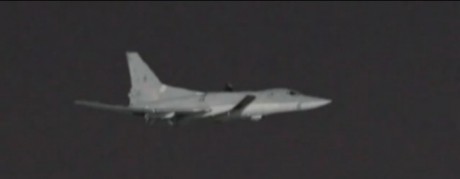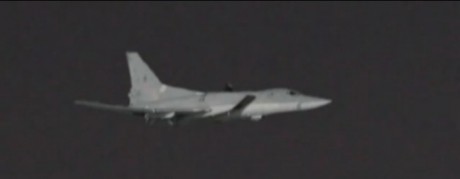Update Jan. 7, 2013 14.00 GMT
The following video was allegedly filmed on Aug. 27 by a passenger of flight Alaska Airlines 821 from Sacramento and Kahalui, Hawaii.
According to the uploader, who has posted to Youtube fictional videos depicting attacks on Russian ship, it shows the Boeing 737-800 on its way to the Hawaii (about one hour off San Francisco) flying quite close to a Russian Air Force Tu-22M Backfire.
The Russian bomber approaches the airliner from the left astern, same level, then slowly flies past: more than an interception (as the author describes the maneuver) it’s an overtaking.
No U.S. fighter plane shadowing the Russian bomber can be spotted in the footage, although we can’t be sure the Tu-22 was being closely tracked nor that F-22 Raptors had already been scrambled from Joint Base Pearl Harbor-Hickam, Hawaii.
Even if a Tu-22M (similar to those that China might operate in the near future to counter the U.S. Navy in the Pacific and South China Sea regions) flying in international airspace, would not be a big surprise, its proximity not only to the Californian coast but also to civilian traffic is a bit weird.
In fact, the video was probably probably extensively doctored. The Tu-22M perspective and angle doesn’t seem to change and its strobe light is more than suspect. Furthermore, since it doesn’t show an IFR (In Flight Refueling) probe, the Backfire would be a bit too far from any operating airbase in the Pacific region.
Even if fake, the footage gives us the opportunity to discuss about military flight operations in the vicinity of foreign airspace. Something that happens quite often, for instance when Russian planes undertake long range Cold War-like missions in North Europe and Japan.
When they don’t follow standard ICAO procedure, state/military flights must operate in “due regard” to provide a level of safety equivalent to that that would be normally provided by ICAO-compliant ATC agencies.
Military planes operating in international airspace are not obliged to establish a two-way radio contact with the local ATC agency and operate their transponders. So, either visually (in VMC – Visual Meteorological Conditions) or by means of airborne radars they should operate outside controlled airspaces and keep self separation from other aircraft. Therefore they don’t usually fly much close to high density airspace or most crowded airways and that’s why the presence of a Backfire so close to a civil plane over the Pacific is at least unusual.
Related articles















